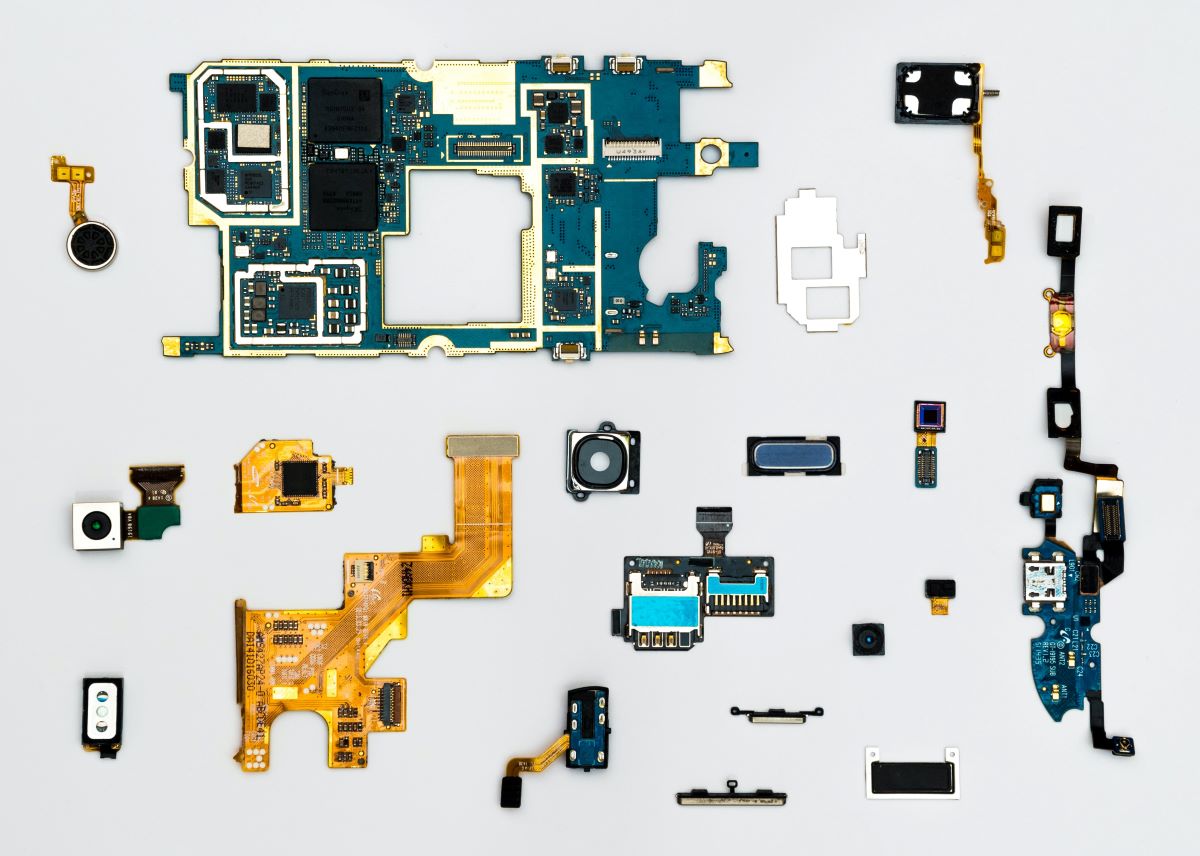Synthetic biology or SynBio is a powerful and versatile tool that can be used in a wide number of applications. The limit lies in the researcher’s fantasy – and, obviously, ethical issues linked to the final employment. However, SynBio, being a multidisciplinary approach, can be a useful instrument both in energetic transition and in re-thinking industrial processes in a circular perspective.
Modularity and multidisciplinary approach at the base of synthetic biology
Synthetic biology awareness has been growing up for the past twenty years, especially after the introduction of iGEM – International Genetically Engineered Foundation – in 2005, which enabled young student generations to get in touch with the topic and to demonstrate their abilities as developers of ideas.
Synthetic biology is a way through which genetic engineer can be visualized and put into action: not only is is able to empower one or more pathways of an organism – but also to create new ones – with an eye on process repeatability. SynBio sees organisms as systems able to carry out different functions. Each function is made up of several interconnected parts – which in last analysis are genes – that can be broken down and recomposed to form different functions and, at the same time, to improve existing ones. Synthetic biology is this sense a strategy to interpret and exploit an organism functions based on the concept of ‘modularity’. It borrows notions from engineering, molecular biology, bioinformatics and biotechnology.
It is, as a result, a powerful tool for the creation of new biological circuits. With a view to circular economy, the possibility to exploit organisms – plants and microorganisms – as biofabrics led to a crescent number of interesting scenarios. Organism can be modified in order to make them produce secondary metabolites, proteins or drugs. In addition to this, an organism can also be engineered to enhance recycling yields, such as in bioremediations panoramas. Nowadays, the main markets which employ SynBio belong to the areas of agriculture, health care and chemicals production.
Plant as biofactories: circular recovery of tobacco lands
Historically, Europe has been more conservative and sceptical than America or Asia in accepting GMO. Its strict legislation about GMO release in the environment confirms it. According to Diego Orzaez – researcher at CSIC, Consejo Superior de Investigacion Cientifica, Spain – “It is positive to have to undergo controls when it comes releasing modified plants in a not controlled environment. Nevertheless, it is necessary also to balance the risk with the potential benefits”.
Plants can be used as biofactories in protein production, such as vaccines or antibodies. The plant species in which a new biosynthetic pathway is going to be introduced is chosen mainly due to the ease of modification and cultivation and to the negligible risks of outcrossing with native wild counterparts in the EU. “The agronomic tradition of the area in which the plant species will, eventually, be introduced is to be taken into account. In fact, to be produced molecules could need controlled conditions, such as specific temperatures or humidity conditions and, therefore, they grown up in greenhouses”, the researcher adds.
Moreover, the elected species should not have a food status in order to minimise the contamination of the food supply chain. Thus, economics, social and technical considerations are next to be examined. Diego Orzaez is the coordinator of the European project Newcotiana which aims to revalue tobacco areas in decline by providing traditional tobacco cultures with high value non-smoking products. About the project, he declares that “Nicotiana benthamiana and Nicotiana tabacum are the elected species for the projects and they have been modified with SynBio tools in order to produce high value chemicals instead of nicotine. The modified tobacco plant should substitute the traditional ones”. In order to make the project the most circular as possible, biorefineries are going to be built near by the production area and they will provide the extraction of the compound of interest and of all the other proteins – which will be addressed to other industrial uses. Furthermore, the remaining biomass are to be exploited for heat.
In conclusion, Newcotiana’s virtuous project succeeds both in enhancing the local economy and creating health related bioproducts.
Microorganisms’ potential applications in recycling
Just as much as plant, microorganism – bacteria, yeasts and fungus – can be engineered for high value molecules productions, as well. Clearly, the approach is to be different, since not every protein is recommended to be produced in microorganism: proteins which need post transcriptional modifications similar to mammalian will be not produced in procaryotic organisms, such as bacteria, but in organisms able to perform those modifications, like plants.
Synthetic biology has in fact an enormous range of applications in recycling. It exists a vast number of ways in which SynBio tools can be exploited. Microorganisms are very versatile beings: they can survive in extreme conditions and they have developed a wide number of metabolic pathways that enable them to get energy from different substrates. Hence, concerning the recycling of a material, microorganisms’ pathways offer much inspiration and opportunities. For instance, lignin degradation for biofuels production is carried out by fungi enzymes, which are optimized and produced in large quantities in yeasts. Once again, synthetic biology is in this sense essential: yeasts need to be modified to create enzymes cocktails that lead efficient to bioethanol production. In addition to this, Virginia Echavarri-Bravo – postdoctoral researcher in Louise Horsfall’s lab at University of Edinburgh (UK) – underlines that “enzymes can also be used for the lignin valorization”. As a matter of fact, through enzymes, chemicals that nowadays are produced from fossil fuels can be synthesized from biomass. However, much more can be performed by microorganisms, and this is the case of lithium batteries recycling process. Virginia Echavarri-Bravo is one of the scientists who investigate how to exploit bacteria for recycling lithium and other rare metals contained in lithium batteries. “As the market of electrical vehicles is in expansion, the demand for batteries is to increase and, consequently, the raw materials requests are going to increase, as well”, explains Echavarri-Bravo. The U.K. has financed an imponent research project – ReLib – which involves 12 partners and 6 Universities for pursuing the objective. Recycling batteries would decrease the importation of lithium and other materials and enhance the circularity of the future electrical vehicle field.
But how does it work? “After suitable bacteria individuation, the elected ones are engineered and can seize metal, which exist in the solution in their ionic form”. In other words, all those metabolic pathways can be found as presenting output proteins required for metals sequestration, they can thus be optimized and engineered. “Depending on the synthesis pathway – Echavarri-Bravo continues – metal nanoparticles can be produced intracellularly o extracellularly, free or attached to the bacterial cell”.
The goal of the ReLib project is the creation of a national circular economy for lithium batteries, which can be supported by the use of SynBio tools.
Digi.bio: a step into the future
Synthetic biology is a very promising concept. However, if on one hand SynBio versatility is evident, on the other hand its industrial scale-up is not that easy. Federico Muffatto – Digi.bio founder and CEO – lists three main challenges SynBio has to face in the near future. According to him, “without any doubt, one big challenge is social and it is about changing our cultural approach to biotech and GMO. The other two challenges are of technical and economical nature. Technologies able to produce a scale-up are expensive. At the base, clearly, the production of functional strains (coding fragments of DNA) is needed”.
Engineering a strain and creating a pool of cells of interest is complicated. Nowadays, “there are not hardware and software for working full scale”, Muffatto underlines. Therefore, the process is slow, and researchers are forced to focus on one or few genes per time.
Digi.bio proposes new and innovative solutions to tear down the wall of automation and making faster and more controllable the development of programmable cells. Muffatto and his team have developed the “Lab on a chip technology” – based on digital microfluidics and electrowetting – which, coupled with artificial intelligence and machine learning, allows the simultaneously manipulation of multiple samples and permits a holistic approach to data analysis. The single gene loses importance and the interactions gain relevance.
Therefore, artificial intelligence and especially machine learning permit to deeply understand the cell system, being two valid allies during SynBio work flow, which can be resumed in design, build and test.
Emphasising interactions means optimising better the strain and, consequently, being able to built strains more and more complicated. As Federico Muffatto dreams “plant a seed and grow a house”.



